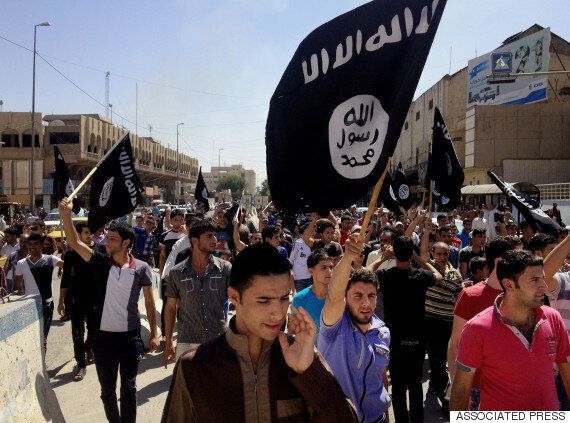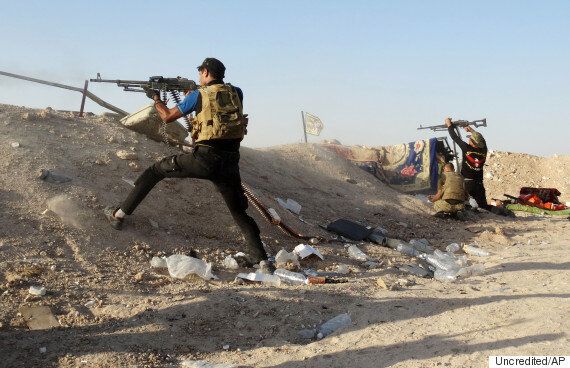ISIS is an acronym for Islamic State of Iraq and Syria. Some outlets refer to it as ISIL (the Islamic State of Iraq and the Levant) and in other cases, the group is known simply as Islamic State, or IS.
In less than two years the terror group, whose goal is to establish a caliphate (meaning a government under Islamic rule), has gone from being virtually unknown, to a worldwide household name.
Since it established, the group has seized control of large regions in Iraq and Syria and now they have operations throughout the Middle East and Northern Africa.

Demonstrators chant pro-IS slogans as they carry the group's flags in Mosul, 225 miles northwest of Baghdad in June 2014
Origins
The group's origins can be traced back to American prison Camp Bucca where nine Iraqi members of IS's top command did time, including its current leader Abu Bakr al Baghdadi.
President Barack Obama conceded: "ISIL is a direct outgrowth of Al-Qaeda in Iraq that grew out of our invasion."
And Patrick Skinner, a former CIA official states: "I think it's undeniable that one of the main causes of ISIS’s explosive growth after 2010 was (Camp) Bucca. It's where they met, it’s where they planned."
The IS group was originally an Al-Qaeda group in Iraq and it has become notorious for its brutality, including mass killings, abductions and beheadings.
Aims
In 2014 the group declared it's aims as "caliphate" - a state governed in accordance with Islamic law, or Sharia, by God's deputy on Earth, or caliph.
IS has also has requested for Muslims across the world to swear allegiance to al-Baghdadi and migrate to territory under its control.
They have also told other jihadist groups worldwide that they must accept its supreme authority in order to eradicate obstacles to restoring God's rule on Earth and to defend the Muslim community, or umma, against infidels and apostates.
Territory
Though IS has established power in large regions of Iraq and Syria and are maintaining operations throughout the Middle East and Northern Africa, their territories are constantly changing.
In June 2015, IS militants seized southern parts of Hasaka, a city that had been contested between Kurdish forces and the Syrian government.
And in May, militants seized control of historic city, Palmyra known in Arabic as Tadmur.
Syrian activists said several hundred civilians were killed by the extremists after they captured the city.

In this photo taken on 15 June, Iraqi security forces defend their positions against an IS group attack in Husaybah
To promote its aims, IS runs a sophisticated social media campaign that includes both footage of work at local hospitals to brutal execution videos.
It’s believed the group could have up to 31,000 fighters worldwide.